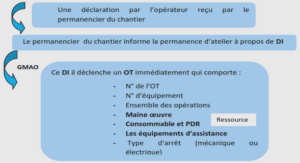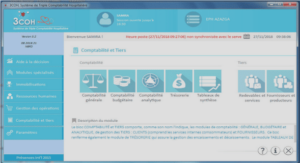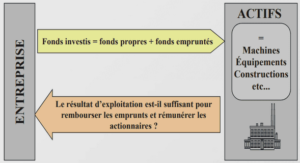Télécharger le fichier original (Mémoire de fin d’études)
Sustainable Agriculture and Environment
There are many things connected to agriculture industrialization that have serious effects on environment, because a lot of pesticides, chemicals and water required in growing the crops. In order to achieve crop production in higher yield, a lot of fertilizers, pesticides and chemicals along with water are being used from recent decades. As a result of this surface run-off of nitrogen, phosphoric emissions of nitrogen compounds and leakages have negative impact on environment. In 1950’s the use of fertilizers was much less as compared to these days. The Western Europe is working on eco friendly plantation and varieties of vegetables and fruits are produced by using new technologies and innovative management systems. The condition of agriculture production is worst in the Eastern Europe as compared to Western Europe because of soil quality. Sustainable agriculture means to manage the resources efficiently to satisfy the needs and desires of the people in the shadow of eco friendly products that can help us to keep our environment sustainable. (Ebbersten 1997)
Things kept on changing with the time and textile researchers tried to find solution for the impacts of textile industry on the environment. So more and more textile manufacturers, producers tried to use and look for Biodegradable and sustainable fibers for their products to overcome the impact of textile harmful chemicals and non eco processes and find some solutions by new and innovative technologies and processes. Biodegradable fiber comes from sustainable sources and is eco friendly in characteristics. (R.S.Blackburn 2005)
Textile products are made, sold, used (reuse) and in the end discarded all over the world. So different technologies, processes, methods and procedures are used in the life cycle of textile product from fiber to garment stage and these all processes work on the way constructed by market key players like business men, politicians and technologists. Globalization brought all new ways and changed the old procedures, policies and a paradigm shift occurred. Because after globalization in the area of fibers, raw material, Government made regulations and retail brands, buyers and multinational companies build new standards and rules for setting the price and quality. The same things fits for Dyeing, processing and biological processes in the finishing. (Tobler-Rohr u.d.)
The development in Spinning, Weaving, Dyeing, Finishing, Cutting and Stitching machinery and technology took more than decade to shift into new era. Million of Euros and Dollars were invested in research and development of these techniques and ideas. In mature technology, the new innovation is requirement for making the system and processes reliable and efficient, and this can be achieved along with performance in economy as well as ecology. These aspects of eco logical and resources are considered by term Sustainability that is increasingly recognized by the customer. (Tobler-Rohr u.d.)
Data and information about sustainability is provided by scientists in specific area, environmental sciences, biology, Social Science, toxicology and many more. Most of the people don’t know about the product and its background they are using in their daily life. Young generation that is more trendy and fashionable don’t know what they are wearing and from where it is coming or whether it consists of any harmful material or not. So the need is to make awareness among the new generation and try to guide the old one about the sustainability and how we can keep check on our daily life product about their origin and materials in it. Sustainability helps the firms and companies to become more stable economically as well as environmental friendly. (Tobler-Rohr u.d.)
Materials
The fashion industry has philosophy to encourage the consumers to throw away the old products (that are still serviceable) they are using and buy the new and more stylish products, is now emphasizing to reserve and preserve in order to be the part of efforts for sustainable development. (Hochswender 1990). When we are going to talk about the sustainability in textile fashion the first thing that strikes in our mind is the material because materials are the starting point for making a textile product and they play a significant role in making the textiles and fashion products good looking and appealing. Fashion is a central characteristic in textile and clothing industry these days. Design and fashion in clothing cater for basic human needs for clothing and for protection and at the same time fulfill the demand for decoration and beautification. The centrality of fashion textiles in human culture reveals that it is the forefront of both technological and artistic development. (Fletcher 2008)
Different types of natural and synthetic fibers are used in producing fashionable textiles. Two main types of textile fibers are used in textile fashion, these are natural and manufactured. Natural fibers are derived from animal and plant resources while manufactured fibers are made from synthetic materials and sometimes also from raw materials derived from plant and animal resources. The demand for fibers for textile fashion products manufacturing is increasing all over the world, but unfortunately today the textile industry is dominated mostly by few and similar raw materials. Idea of diversity in the materials used in textiles is hard to find, In textiles all over the world cotton and polyester are the mostly used fibers; these fibers together contribute about 80% of the worldwide market in textiles. Demand for polyester fibers has been doubled in last 15 years, and is most popular and required textile material after cotton. This results in large scale production of limited fibers in a specific agricultural sector that reduces the customer choice and increases many risks like ecological and environmental risks. (Fletcher 2008)
We should concentrate on producing different kind of fibers that are more resource efficient. For example instead of conventional cotton we should grow organic (low chemical) cotton, hemp and flax that need less pesticides and water for their production. Similarly instead of polyester we can produce renewable and biodegradable fibers such as Bast fibers and Alginate fibers, these fibers have low impact on environment and decrease our dependency of oil for polyester production. This will result in the cultivation and promotion of fibers that have potential to fulfill our raw material needs with less resource consumption, it will also promote local agriculture with more varied and regional fibers, more benefits for local farmers, more jobs and ultimately more social, economical and environmental benefits. So diversity in raw materials provides a way of sustainability in textile fashion. (Mantford u.d.)
Importance of materials
Materials play a significant role in producing the sustainable fashion products in textile industry; the materials dominate our ideas about economical, environmental and social responsibilities, because there are many steps involved in the production of natural fibers and man-made fibers and also the conversion of raw material into a finished fabric and ultimately finished garment involves several steps and different resources like labor, energy, water, chemicals etc. Many complicated chains and processes are also involved in manufacturing industry for making a fashionable textile product. Several aspects do need attention relating to quality control, environment and sustainability in the production of a fashion product from agriculturally produced fibers. There is a need to be careful and cautious about the usage of resources. So by choosing the more resource efficient and culturally responsive fibers that use fewer resources and produce less waste and pollution we can begin to design the textile products and production systems that are sustainable. (Fletcher 2008). While designing the sustainable textile fashion products we should think and know about the sustainable materials and systems for production, where in each step from raw material to final product we are more resource efficient, social and environmental friendly and the materials is first ladder towards this approach. Textile products produce a lot of waste and pollution even after their usage when they are replaced with new ones. So recycling is needed to reduce this waste & pollution and recyclable materials can be supportive to some extent in these reductions. Our common reaction towards environmental problems is to reduce the waste after it has been produced but the concept is changing now; there is a need to be clean from start of the manufacturing so that less waste and pollution is generated. So the materials are starting point here, the choice of materials that are recyclable and resource efficient is the right way towards sustainable development in textile fashion. The fashionable companies are now using the sustainable fibers as raw material for their products in order to move away from ‘end of pipe’ approach to clean manufacturing. (A.R.Horrocks 2007).
Table des matières
1. Introduction
1.1 Scope of Research
1.2 Methodology
1.3 Limitations
2. Sustainability
2.1 Role of Sustainability in Textile
2.2 Sustainable Agriculture and Environment
2.3 Materials
2.4 Importance of materials
2.5 Sustainable materials
2.6 Green movement in the clothing sector
2.7 Fiber
3. Organic Cotton
3.1 History and Background
3.2 Organic Cotton Development
3.3 Key Factors in Organic Cotton Development
3.3.1 Changing life style of consumers
3.3.2 Companies making their business strategies more sustainable
3.4 Growing Organic Cotton
3.4.1 Soil Fertility
3.4.2 Crop Rotation
3.4.3 Cover Cropping
3.4.4 Weed and Pest management
3.5 Advantages of organic cotton
3.6 Disadvantages of organic cotton
3.6.1 Productivity
3.6.2 Cost
3.6.3 Cultivation
3.6.4 Time
3.7 Fashion Brands and Retailers using organic cotton
4. Bamboo Fiber
4.1 History and Background
4.2 Methods of Bamboo manufacturing
4.2.1 Mechanical method
4.2.2 Chemical Method
4.3 Bamboo yarns and Fibers
4.4 Appearance and Properties
4.5 Key properties and features of Bamboo
4.6 Mother of bamboo (Social Step towards
4.7 Bamboo in Demand
4.8 Bamboo Chemistry
4.9 Bamboo Production recommendations
4.9.1 Spinning
4.9.2 Bamboo Weaving
4.9.4 Bamboo Finishing
4.10 Application and uses of Bamboo
4.11 Advantages of Bamboo fiber
4.11.1 Advantages for consumer
4.11.2 Advantages for the environment
5. Designer’s Sustainable Approach
6. Case Study
6.1 Bergman AB
6.2 Product Strategy
6.3 Bergman AB Supply chain
6.4 Five Force Model for Bergman AB
7. Discussion and Analysis
7.1 Impacts of organic cotton in sustainable textile fashion
7.2 Environmental Impacts of clothing industry
7.3 Social Impacts of clothing industry
7.4 Product Development with sustainable fibres in Textile Fashion
7.5 Organic Cotton for New Product Development in Textile Fashion
7.5.1 Competitive Advantage
7.5.2 Supply Chain
7.5.3 Life Cycle Impacts
7.5.4 Brand Value
7.5.5 Consumer Demand
7.6 Bamboo for New Product Development in Textile Fashion
7.7 Customer Review
8. SWOT Analysis
8.1 Organic Cotton SWOT Analysis
8.2 Bamboo SWOT Analysis
9. Conclusion
10. Recommendations
Bibliography





